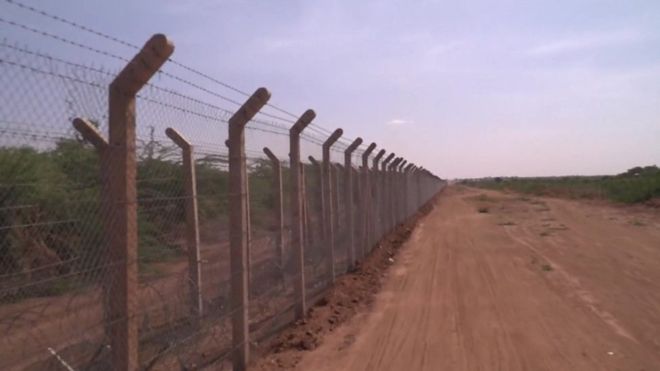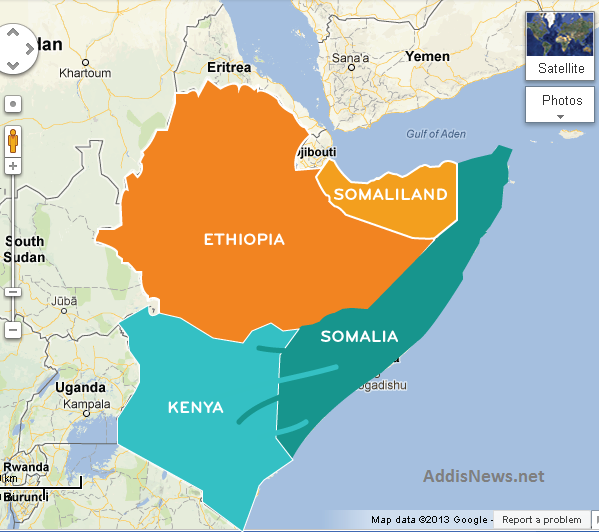Kenya’s border fence that cost $35m for just 10km

At just 10km long, the fence has cost around $3m per kilometre
Source: BBC
According to the BBC, the Kenyan MPs have asked how a 10km wire fence built along the country’s border with Somalia cost $35 million.
Many would wonder why Kenya wanted to build a wall in the first place? Well, according to the BBC, the wall intended to to stop al-Shabab militants from crossing into Kenya. The government had originally promised to build a complex wall to run about 700km (435 miles) along the border. But the “wall”, has ended up being a wire fence that is only 10km long.
Kenya’s parliament has now suspended construction, and is demanding an investigation into the project.
The initial plan by the government (2014) was to build a 708km wall made up of a series of concrete barriers, fences, ditches, and observation posts overlooked by CCTV stations. The wall was meant to stretch from the Indian Ocean all the way to the border region of Mandera, where Kenya and Somalia meet Ethiopia.

The idea, ministers said, was to tackle illegal trafficking and immigration – and most pressingly, to keep al-Shabab militants in Somalia from crossing over into Kenyan territory~BBC
Kenya has one of the world’s largest refugee camps. The camp is made up of mostly Somalians fleeing wars and violence in their country. The Dadaab refugee complex has a population of 235,269 registered refugees and asylum seekers as at the end of January 2018. Dadaab refugee complex consists of four camps.
The first camp was established in 1991, when refugees fleeing the civil war in Somalia started to cross the border into Kenya. A second large influx occurred in 2011, when some 130,000 refugees arrived, fleeing drought and famine in southern Somalia.
Conflict between Kenyans local and the Somali refugees
BBC Four years later, there is a chain-link and barbed wire fence that is just 10km long – a far cry from the mega-wall that was initially promised.
Altogether it cost 3.4 billion Kenyan shillings – that is, $35 million, or £26 million. At 10km long, that works out to around $3 million per kilometre.
To put it in perspective, the BBC’s Ferdinand Omondi in Nairobi notes that this is more than double the amount of money the Kenyan government has put aside for its strategic food reserves this year.
It is also about a million dollars more than it is spending on universal healthcare, and three times the amount it has set aside for affordable housing.
